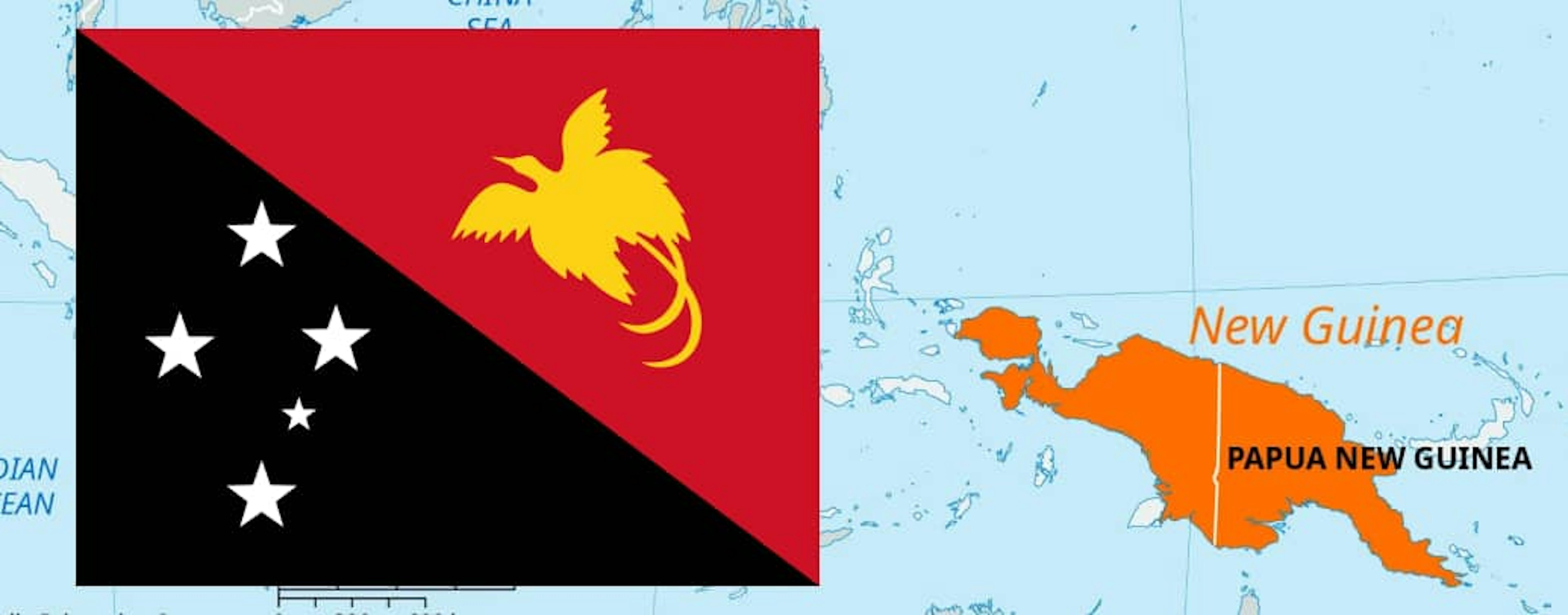The Significance of the Papua New Guinea Flag - Colours, Symbols, and History

The Papua New Guinea flag stands as a beacon of the nation's identity, rich cultural heritage, and its journey towards nationhood. Officially adopted in 1971, this flag carries with it the stories, traditions, and aspirations of a country that gained independence from Australia in 1975. This article delves into the flag's description, the deep-seated meanings behind its colours and symbols, and its historical significance.
Flag Description
The flag of Papua New Guinea is a striking emblem divided diagonally into two triangular sections. The left section, set against a black backdrop, hosts five white, five-pointed stars representing the Southern Cross constellation. On the right, a vivid yellow Bird of Paradise takes flight against a red background. This rectangular flag, with proportions of four to three, encapsulates the essence of Papua New Guinea's identity through its use of traditional colours: black, red, and yellow.
Symbolism and Meaning
Traditional Colours
The colours black, red, and yellow hold a revered place in Papua New Guinean art and clothing, symbolizing the country's traditional aesthetic and cultural vibrancy. Each color contributes to the flag's narrative, weaving a tale of heritage, unity, and national pride.
What do the black and red colours represent?
The red and black colors carry a deep historical and cultural significance, rooted in the traditions of many Papua New Guinean tribes. Beyond its traditional importance, red, alongside black and white, also connects to the historical period when New Guinea was under German colonization prior to 1918, reflecting the colors of the German Empire flag. This inclusion on the flag serves as a nod to the country's complex history, blending its colonial past with the indigenous heritage symbolized by the traditional tribal colors.
Bird of Paradise
The yellow Bird of Paradise, or "Kumul," as it is known locally, is a powerful symbol of freedom and the country's emergence as an independent nation. Culturally significant, its plumes are used in ceremonial decorations, reflecting its importance in the social and cultural life of Papua New Guinea. On the flag, the bird is depicted in full flight, symbolizing the nation's aspirations and its bold step into nationhood.
Southern Cross
The Southern Cross constellation, represented by five white stars on the flag, signifies Papua New Guinea's geographical location in the Southern Hemisphere and its historical ties with fellow South Pacific nations, including Australia. The constellation is a guiding symbol for navigators and has been a constant presence in the night skies above Papua New Guinea, symbolizing the country's place in the wider world.
Historical Background
The journey to the adoption of the Papua New Guinea flag began as the nation edged closer to independence. Chosen on July 1, 1971, the flag was a product of national consensus, a symbol that would represent the country as it stepped onto the world stage as a sovereign nation on September 16, 1975. Its design reflects the collective identity and heritage of Papua New Guinea, honoring its past while looking forward to its future.
Conclusion
The flag of Papua New Guinea is a profound symbol of the nation's identity, embodying the traditional colours found in its art and clothing, the cultural significance of the Bird of Paradise, and the navigational and historical importance of the Southern Cross. More than just a national emblem, it is a declaration of independence, a testament to the country's rich cultural heritage, and a symbol of unity and pride for its people. As Papua New Guinea continues to navigate its path as a nation, its flag remains a constant reminder of where it has come from and the aspirations it holds for the future.


